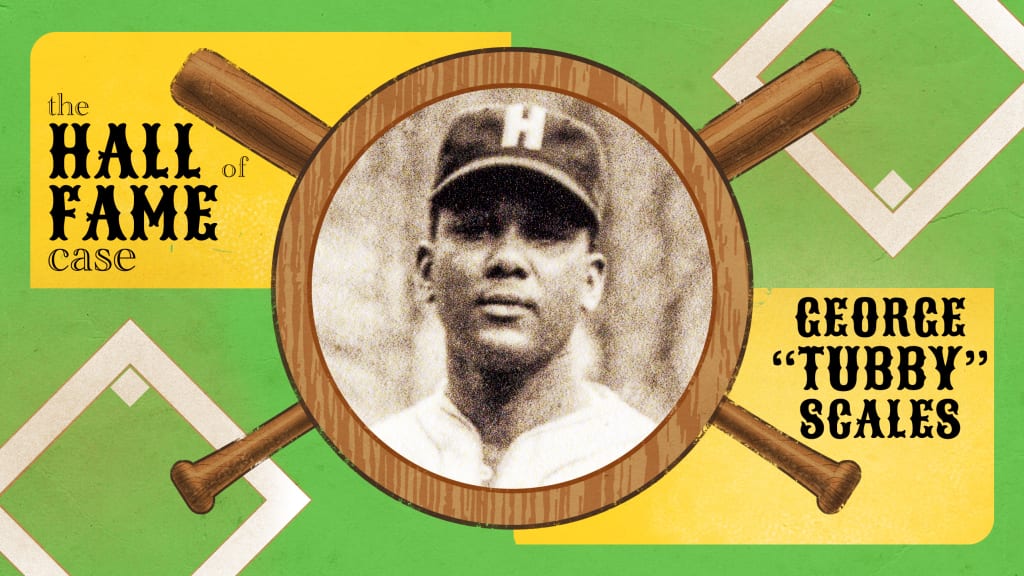
On Dec. 5, the Hall of Fame’s Early Baseball Era Committee (pre-1950) and Golden Days Era Committee (1950-69) will meet to vote on 10-player ballots, with the results announced live on MLB Network that night at 6 p.m. ET. We're here to offer a primer on the 20 players who are up for consideration. Click here to view the other posts.
Player: George "Tubby" Scales
Years: 1921-46
Career stats: (Note: Negro League statistics are likely incomplete) .319/.421/.509, 686 H, 64 HR, 489 RBI, 48 SB
BIO: You've probably heard the term "Professional hitter," a loose-fitting descriptor that applies to anyone who can seemingly step into the box on any day against any pitcher and come away with a good at-bat. George "Tubby" Scales may be the very literal definition. From 1923 -- when he was 22 years old -- until 1940, his age-39 season, he hit .347/.451/.565. Those numbers alone are worthy of placement in the Hall of Fame and they still represent just a fraction of the games he played. Not only because Scales played around the calendar year, going to the Caribbean to keep playing during the winter, but because of the sheer number of games that don't exist in the statistical record due to the lack of press coverage and complete box scores at the time.
But we know one thing: Scales could hit. Hall of Famer "Pop" Lloyd called him the most consistent hitter on the 1927 Lincoln Giants. That would make sense as he hit .419 that season on a Giants team that finished second-to-last in the Eastern Colored League.
He was considered the greatest curveball hitter in the Negro Leagues. On one memorable day against Arthur "Rats" Henderson -- known for throwing one of the best curveballs in the game -- Scales went 3-for-4 with a home run in a game on Sept. 3, 1923.
Not only was Scales hitting, but he was doing it while playing the middle infield. Scales moved around a fair amount, but primarily played second base, sprinkling in a fair amount of time at short and third base. Among big league second baseman, Scales' career average is 12th and his on-base percentage and slugging percentage rank fourth. The Seamheads Negro Leagues database ranks Scales as the second-best keystoner in Negro Leagues history. The Pittsburgh Courier in 1952 ranked him as the fourth-best.
But Scales was also much more than that. He was a decorated manager (at least, when he wasn't getting ejected so often that he was removed from his role as player-manager and resumed just playing), winning five Puerto Rican Winter League championships with the Ponce Lions between 1941-47. He was also to be an effective instructor, credited with helping a then-16-year-old Roy Campanella stop bailing out on curveballs.
Shortstop Tommy Butts said he may have been “a little hard on you, but if you’d listen you could learn a lot.”
Notable statistic: .398
The 1930 Homestead Grays were an unstoppable force. They went 45-15, with Josh Gibson, Oscar Charleston and Smokey Joe Williams just some of the all-time greats who dotted the lineup. But who led the team with a .398 batting average and .496 OBP? Why, no one else but Scales.
Beyond the numbers: You can't compare Scales to Major Leaguers because Scales was never given the opportunity to play against them. He didn't even get a chance to coach in the big leagues, despite expressing interest during a 1972 interview. But whenever he took the field, he hit. He smashed the ball like a Hall of Famer would, and then when he got the opportunity to manage, he led his teams to championships, too. If you were to judge Scales on what we know he did, well, that's a Hall of Fame resume.
